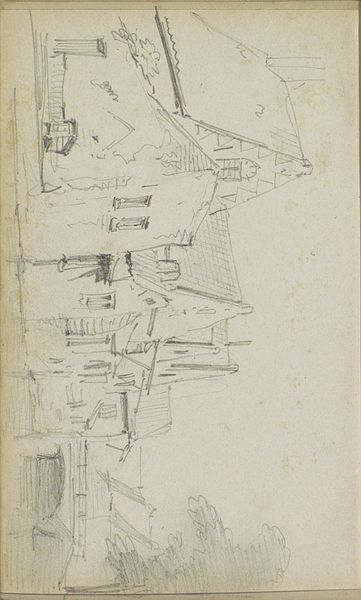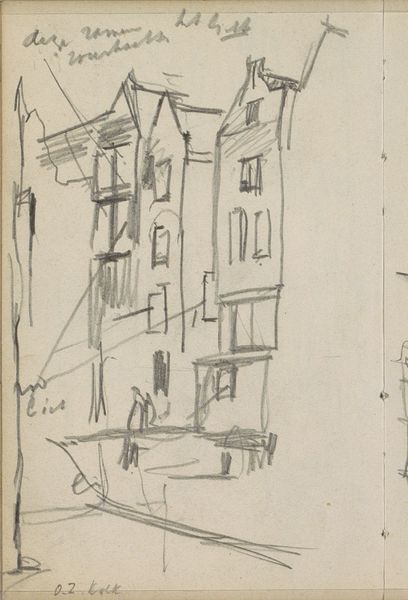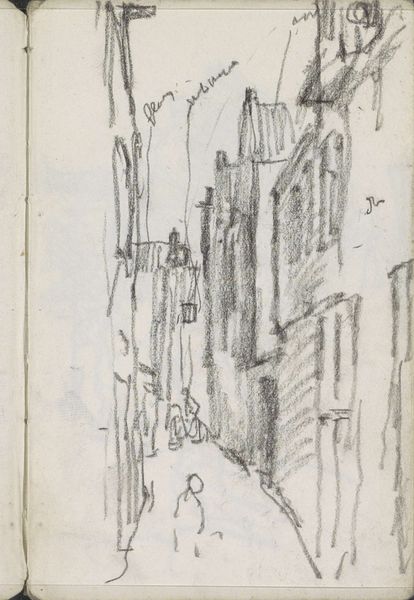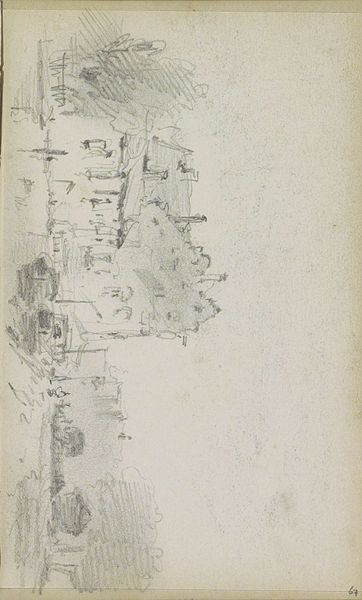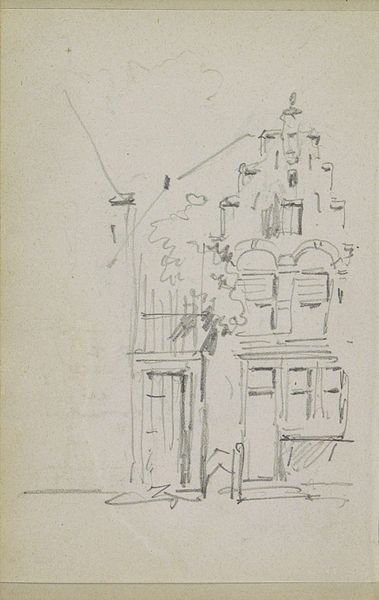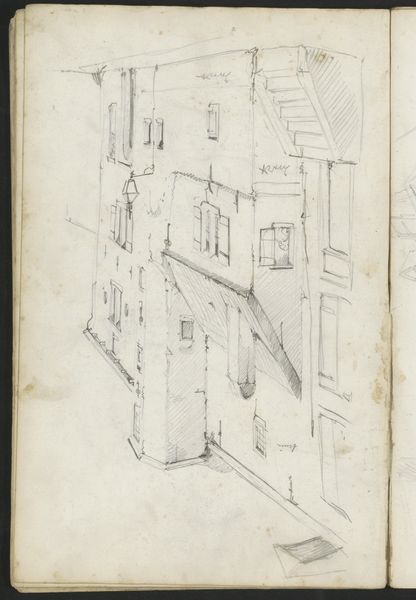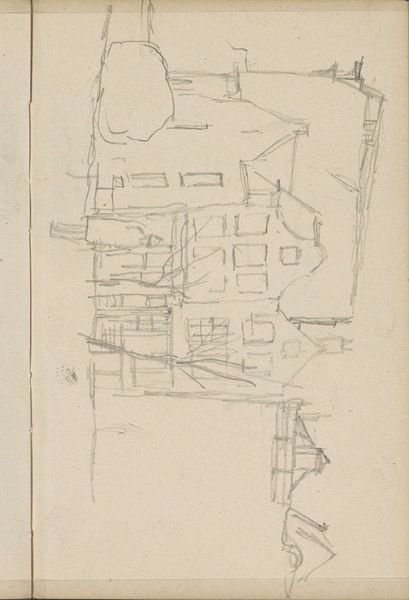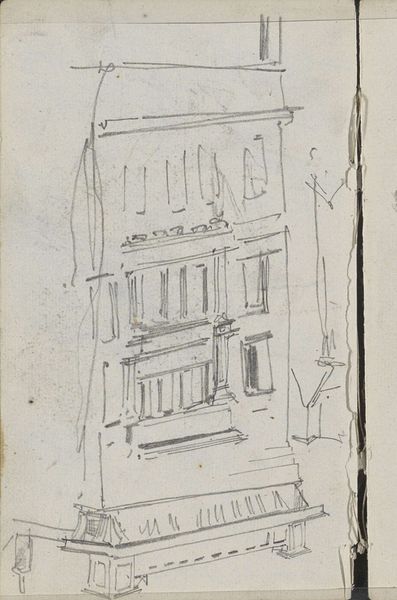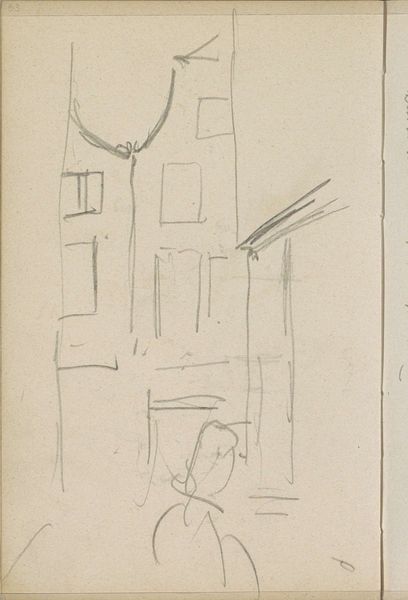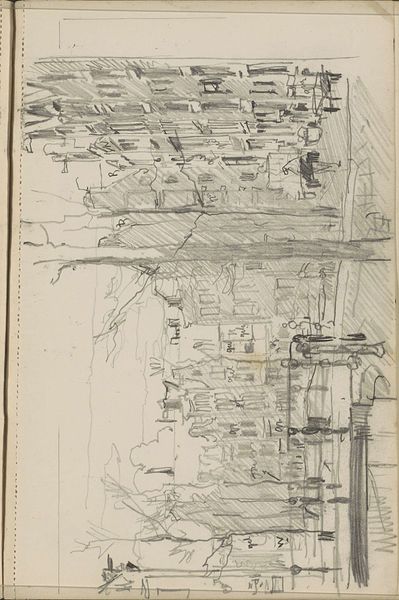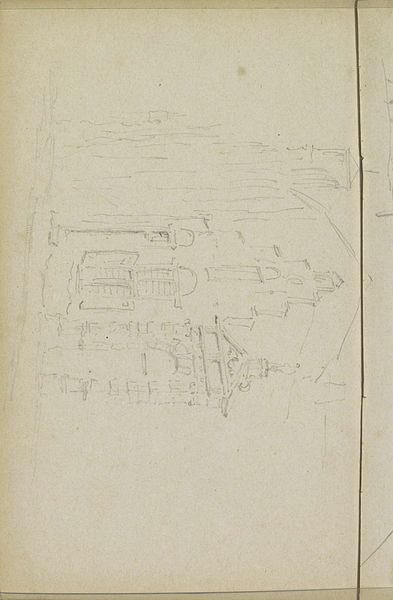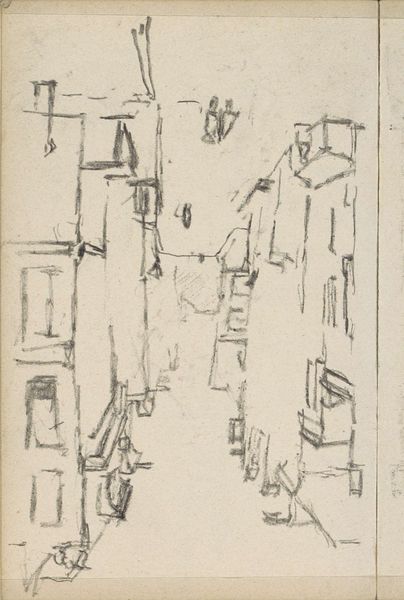
Gezicht op een straat in Amsterdam, mogelijk op de Westelijke Eilanden 1912
0:00
0:00
georgehendrikbreitner
Rijksmuseum
Dimensions: height 160 mm, width 101 mm
Copyright: Rijks Museum: Open Domain
Curator: Here we have George Hendrik Breitner's pencil drawing, "View of a Street in Amsterdam, Possibly in the Western Islands," dating back to 1912. It's currently held in the Rijksmuseum collection. Editor: There's a raw, almost hesitant energy about this sketch. It lacks the finished quality we often expect, instead feeling like a glimpse into an instant—a fleeting observation captured with surprising tenderness, given its unrefined aesthetic. Curator: Absolutely, and Breitner was deeply involved in portraying the lived realities of Amsterdam, especially during a time of great social change. You can sense his involvement in portraying working class neighborhoods that would face considerable upheaval. His drawings were often preparatory studies for paintings, and that process allows an uncensored feel in this rendering. Editor: Yes, that preliminary feel translates as freedom. He seems less concerned with polished representation and more interested in capturing the essence of the space—the shapes of the buildings, their relative positions, and, more importantly, perhaps, how the street creates communal experience for the inhabitants. The scene is stripped of grandiosity and feels grounded. Do you think that reflected something of the growing socialist sentiments that were brewing in the early 20th century? Curator: Indeed, art of this period increasingly responded to socio-political factors like you describe. Breitner often documented the everyday life of working-class Amsterdammers, presenting a gritty realism, but there are layers beyond what you're highlighting here too. The composition, particularly his focus on architectural elements, underscores the imposing structure of society upon ordinary people. I appreciate how you see him breaking with a heroic approach, and that approach serves as a challenge. Editor: That resonates. Breitner seems acutely aware of how the environment shapes existence and I think its fair to see that echoed in the urban sketches of his peers too. What do you think someone unfamiliar with art history will take from viewing this artwork? Curator: Well, beyond any deep symbolism, I think anyone can connect to the honesty here. It’s unpretentious. It doesn’t strive for grandeur but succeeds in offering a poignant view of Amsterdam. It's a slice of life preserved on paper. Editor: I concur; Breitner's ability to communicate urban reality with just a few simple lines feels accessible and universally poignant. His work encourages us to reconsider the value of incomplete representations. It can serve as a strong and empowering commentary on representation itself.
Comments
No comments
Be the first to comment and join the conversation on the ultimate creative platform.

